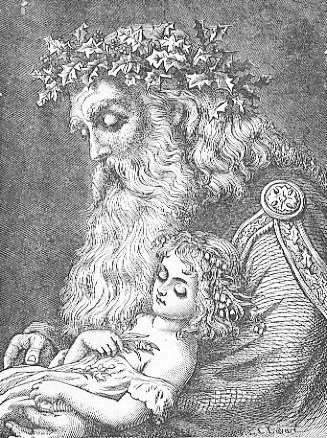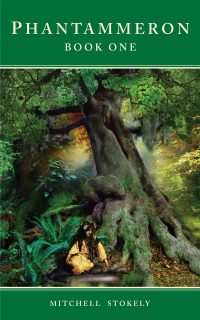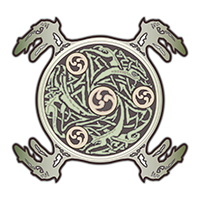Looking at this old 19th century illustration of Father Time you may think that it looks like ol’ Santa Claus. That is no coincidence! His image has reflected the deeper mythological meaning of this old folklore figure since his first appearance in American holidays in the early 19th century.
Years ago, there used to be popular references to Father Time (or Old Man Time) around New Year’s Eve. As Western Culture in Europe and America has regressed the last 50 years his appearance has diminished, along with many books on fairy tales and other ancient lore. But I remember a few vague appearances of this grandfatherly figure in the early 1970’s in American books and cartoons as a child. Those are all gone now as his mythology has died.
“Old Father Time” as an image is in fact a very ancient and little-known archetype of much earlier European folklore and myth. He is in fact a representation of the dying year. And so, he is often portrayed as an elderly, Santa-like figure…..wise, venerable, kingly, aged. Around New Year’s Day, he often appeared in early 19th and 20th century advertising as a gentile old fellow with his white robe and a sickle, a being representing the death of the old year.
In other images he appears to be holding a baby, which is the new year to come. In the 1920’s he was commonly portrayed with the number of the passing years on his robes, handing his crown to the Baby New Year on December 31st. Thus, he appears to be an anthropomorphic representation of the passing year that also gives to us the hope of a new, more youthful one. But there is a deeper more transcendental meaning in Father Time that’s lost.
It turns out that for cultures in the Northern Hemisphere (England, Ireland, Scandinavia, Europe, Russia, etc.), they saw the dramatic changes of the year and the movement of the sun as critical to their survival. They worshipped the sun for that reason and closely followed its path, its movement marking the Time that passes in yearly cycles. They then celebrated its passing through Solstices and Equinoxes. Thousands of years ago, Western Europeans developed a strong dominant representation of Time itself in God-like form, in myth, in celebrations, in imagery, and even sacrifices. They often portrayed the dying year as an aged, bearded figure representing the year that had to die at midnight on the Winter Solstice (Christmas) so a new year could be born from his resurrected spirit. He in fact was tied to Time itself and its endless cycle, its constant, birth, death, and rebirth.
Father Time seems very Christ-Like, you might say? In fact, his sacrificial story pre-dates Christianity by thousands of years. It would seem he almost forms the prototype of Christ. In the Mythology of Indo-European lore, this figure was often contained in a universal Sun deity – the heroic, anthropomorphic version of the Sun as Saturn, Siegfried, Baldur, Balor, Bran, etc. You will often see a mother figure with this shining son, Mother Nature herself holding her blessed light-giving child on the New Year. We see him as the son of the Earth Mother, a brother to his twin, the Lord of the Dead who was his polar opposite. In that sense he is the Summer while his brother is the Winter. This latter figure is often seen with a sickle. But that is in fact his cosmological twin, the Grim Reaper, the son of the same Earth Mother who has now donned a dark mask in Winter, transformed into the Witch or Hag of Hallow’s Eve.
Thus, we have the Earth Mother wearing two masks, the Virgin and the Witch, holding either the Lord of Light or the Lord of Darkness, her twin sons at two opposing junctures of the year. Father Time in fact represents them both, a merging of the two to form a symbol of the dying year, its baby and its old man. In truth, I believe the Father Time that we see on December 31st is in fact the sun figure of Saturn. He would have been symbolically slain by his twin, the Lord of Darkness, on Christmas, a time of deep mourning by our ancestors for his death. His twin was then reborn as a baby on New Year’s Day, his own Christ-like soul reborn in new raiment.
This darker version of Father Time we see with the sickle was in fact Hades or Hel, the Lord of the Underworld of the Indo-Europeans, with the baby figure that replaced him on January 1st being the personification of the sun, his polar opposite reborn. We often see the Grim Reaper in myth appearing around the Fall or at Halloween, the time when the gates of the Underworld opened up. In fact, his presence would begin on the Summer Solstice and end on Christmas. That means he would disappear on May 1st when the Earth Mother as Virgin appears beside her handsome son, the Lord of Light, symbolically defeating his dark brother to bring Summer again.
All this plays into the Sun Worship conflict-drama that defines all of Western Culture today; its dualistic politics, its opposing sports teams, its fatalistic conflict-based competitive culture that appears in all our film and books and stories. We celebrate the birth and death of the sun in every conflict we create in the West; Spring and Winter as opposing forces in its eternal myth. The year, like the sun itself, draws every closer to the horizon in Winter, perishes symbolically as an old man but not without struggle in our ancient myths. And so around our winter holidays he thus becomes a representation of Father Time, the old year that must die but not without conflict, loss, and great sorrow. For we know the Celts in Ireland, Britian, and Europe would mourn for his death on the Winter Solstice for 5 days until his rebirth as a new sun-child on January 1st. This was the eternal cycle of Father Time. But it was the Earth Mother, his eternal mother, that gave new life to him, who so loved him, but then took part in the taking of his life in the final drama of the dying sun around Christmas. Our own Christ celebration is thus a reflection of this ancient conflict-myth that ends in eventual resurrection.
Oddly enough, Santa Claus has now replaced his personage in modern celebrations. When we see this elderly figure, whether he is Santa Claus, Father Time, or Christ, he is in fact an archetype of the ancient Indo-European myth of the death of the sun and the year. But in Father Time he is in his truer form……as the dying old-man year the Celts and European primitive cultures saw as the dying God of the year.
When we see this old man we are reminded of Time itself; of the dying sun, the sadness of our loved ones who have passed, and the one-way journey and rebirth of the Sun through the underworld of ancient European myth. You may deny you see these symbols, but unconsciously he is there in your brain in some form. People of European descent often are flooded with fairy tales and images of this figure unconsciously portrayed in products, Christmas wrapping paper, music, and ritual. Why?
His symbols still fill our culture, fill our holidays, fill the spiritual needs of our children through kind and generous holiday figures. His image fills our views of contradictory Celtic Time, not as a steady stream of events, but as a dramatic, emotional, fatalistic path filled with many conflicts and crossroads. Such is the Western Mind and its connection to the Cycle of the Seasons. That’s why I feel sadness that I no longer see this figure in his Father Time form in Modern American culture.
Yet in Santa Claus, he seems reborn each Christmas for our children in a modern myth that has power and relevance. Father Time as Santa Claus is a LIVING MYTH! Living myths defy our hollow science and empty digital age in a way we cannot deny. For our children hold such things in their hearts such that they will forever give those myths back to their kids. Every time a man wears a Santa costume, they are portraying the living myth once more…..the same strange elderly figure that refuses to die in Western culture. We now need to bring back the idea that the Western mind needs reminders of passing Time, of change, of conflict, and sorrow for the Sun of Light and the seasonal holidays that are so often filled with his pictures, plants, and symbols.
We need Father Time and the ancient mythology he represents, that which still lives inside us and our children, lives in our European DNA. It’s up to us to revisit the mythology Father Time and find a way to honor him, once more, recreating his magic archetype again. To do that we must first accept and remind ourselves that myth matters! We are still pieces of our ancestors. Yet we must accept that recent history, as short and fast as it seems, is still largely controlled by these ancient primitive symbols that reverberate through time. For its last great symbol – Father Time – still haunts us, even now.
– The Author





Father time came in a dream and taught that the sun, though spreading its energy without restraint in all directions to all things, actually has all of the energy return back to it. The phrase “it is a closed system” was spoken.
This very interesting the only reason why I wanted to learn more is because my birthday is January 1st and I was watching a scary movie and they were saying that father time lives his whole life in one year and at the end of the year he comes and takes the first born child on new years to replace him. So i just wanted to see how much truth there was to this story. Thanks for this article.